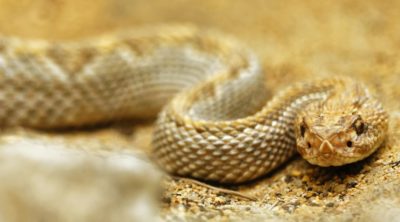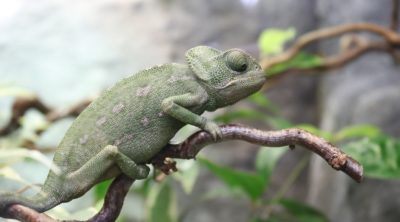
The sulcata tortoise dwells in hot arid regions and so has unique dietary requirements. This PetPonder article tells you all you need to know about this unique pet’s diet.
African spurred tortoise, also called the sulcata tortoises, is from hot, dry scrubland regions of Sub-Sahara in the large swath across North-Central Africa. It inhabits in semi-arid environment and can not survive in damp, wet or cold conditions. In the wild, the African sulcata tortoise survives the intolerable heat and drought by making deep burrows and going underground for months. The burrows are cooler and provide sufficient humidity to prevent the tortoise from dehydrating during this extended period of hot weather.
Physical Characteristics:
Sulcata tortoise grow fast and very large, up to two and a half feet long and 80 – 110 pounds or more. In fact, only the giant tortoises of the Galapagos Islands and Seychelles have surpassed the sulcata tortoise in size. Its carapace (top shell) is sandy-ivory or golden yellow-brown in color and each scute (the external plate or scale of the shell) is outlined by brown growth rings. The plastron (bottom shell) of this tortoise is light tan to yellow in color with no markings and has thick skin with dull, spine-like projections on the legs. As young, sulcata totorise can be handled gently but as it is juvenile and adult, this tortoise gets too huge and is difficult to handle. Hence, it is best suited for the outdoors but can also be kept in vivarium or dry aquarium.
Diet:
Sulcata tortoise has a voracious appetite and so providing it a proper diet is essential for its health. It mainly requires a diet which is high in fiber and calcium and low in fat and protein. The sulcata tortoise is a strict vegetarian and in wild just like cows and sheep, it gazes dry, fibrous grasses and hays, as well as occasional fruits and blossoms. However in captivity, its diet may include dark, leafy greens such as collards, mustard, romaine, and red leaf lettuce.
Carrot tops, beet greens, spinach, beet greens, carrot tops, kale, broccoli, and especially rhubarb, contain high amounts of oxalates which bind calcium and so should be given in limited quantities. Also too much of calcium, phosphorus or even proteins can cause malformations of the shell, diarrhea, and accelerate the growth rate, along with other problems. Besides the above mentioned diet items, timothy hay, alfalfa, and other feed store grasses can also be given to an adult sulcata tortoise. Fruits like strawberries, bananas, melon, berries, and apples can be given as treats in moderation. This tortoise is not used to a sugary diet, but the occasional banana, fig, or apple will cause no harm. The key to its proper nutrition is variety, hence, keep in mind that in moderation, no single food will be detrimental to its health.
Recommended Diet Items can be broadly classified into three types:
i. Various types of Nutritious Grasses: Buffalo Grass (Buchloe dactyloides), Bermuda grass, Orchard grass (Dactylis glomerata), Big Bluestem (Andropogon gerardii), Western wheatgrass (Agropyron smithii), Arizona Fescue (Festuca arizonica), Lawn Fescue (Festuca arundinacea), Sheep Fescue (Festuca ovina), Creeping Red Fescue (Festuca rubra).
These grasses should comprise at least 75% of your sulcata tortoise’s diet.
ii. Weeds, Leaves and Flowers: Dandelion, Prickly Pear Cactus pads (Opuntia species), Globe Mallow (Sphaeralcea grossulariifolia), Hollyhock (Alcea rosea), Rose flowers, Sowthistle, Chickweed, Mulberry (Morus species) leaves, Grape (Vitis species) leaves.
These items should comprise 25% of the diet, but should be free of chemical fertilizers, pesticides, herbicides, or fungicides.
iii. Dark Leafy Greens: Romaine Lettuce, Arugula, Collard Greens, Mustard Greens, Turnip Greens, Chicory, Spinach, Kale.
Being rich in calcium and vitamins you can feed your sulcata tortoise with these items but in small portions.
Many sulcata keepers also like giving their pet some multivitamin and calcium supplements. Hence, being the third largest tortoise species in the world, sulcata tortoise care and health can be huge responsibility especially when kept in captivity. Not only it is big but also lives a very long life of about 100 years, hence it usually outlives its owner.

